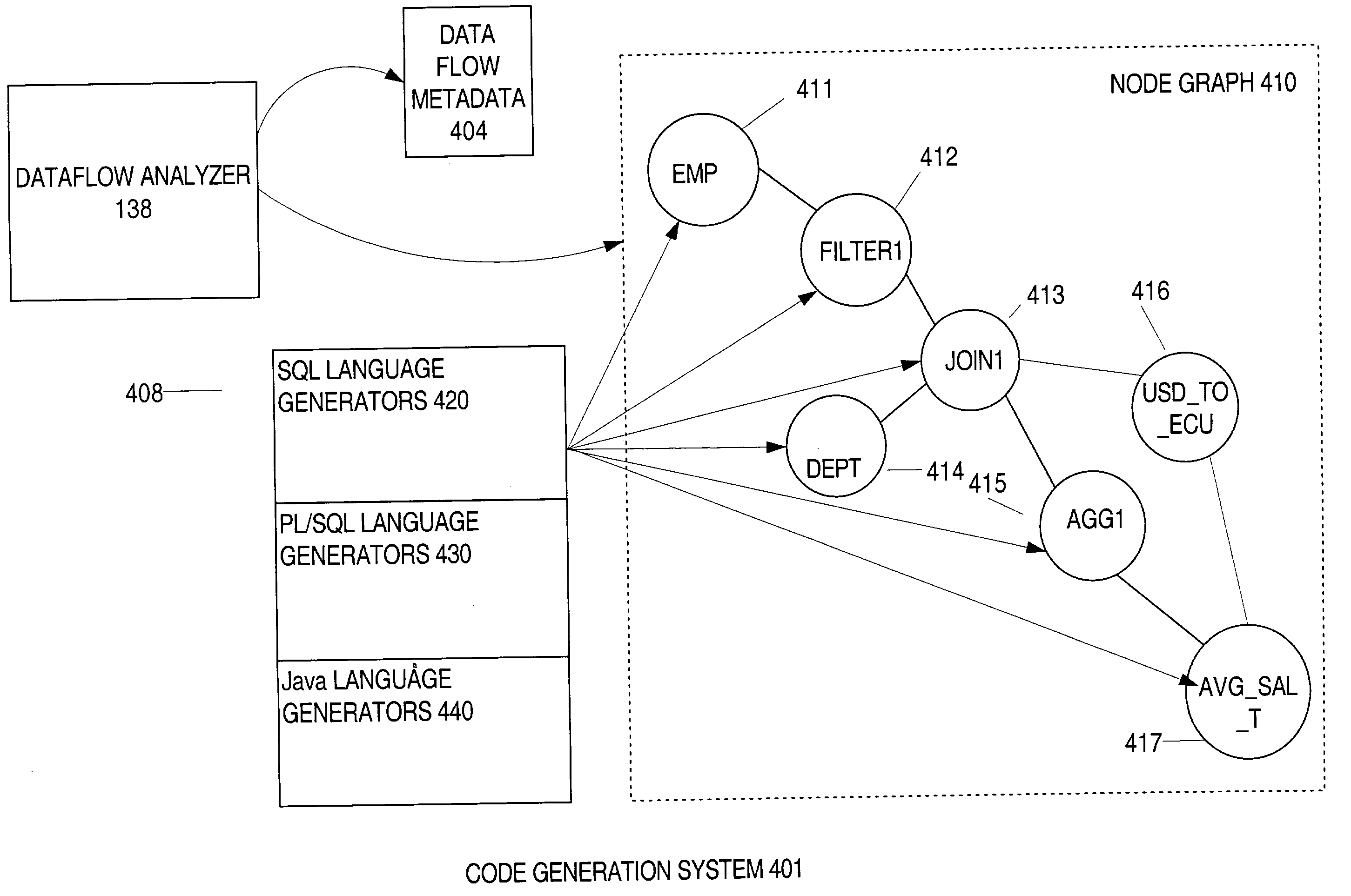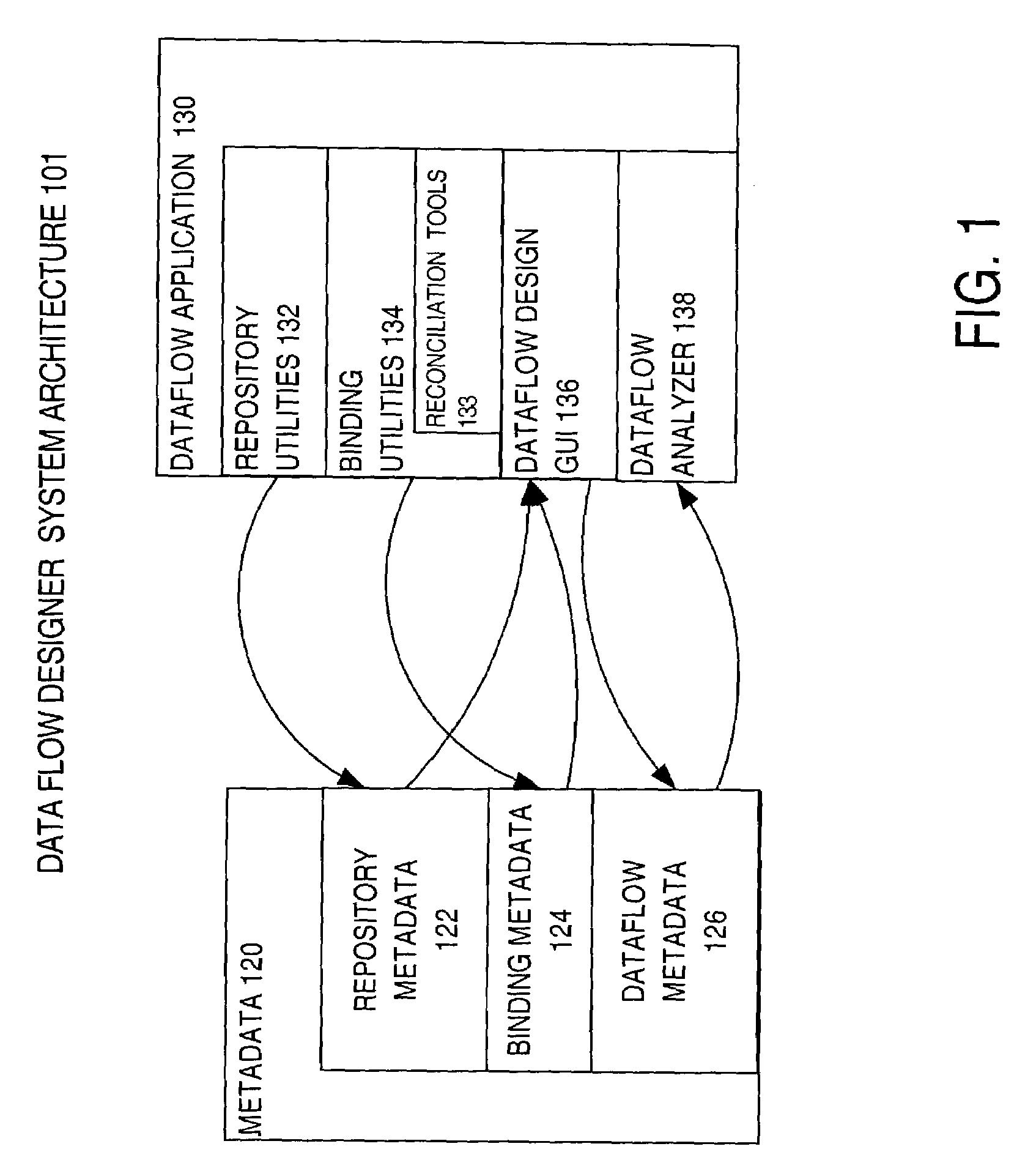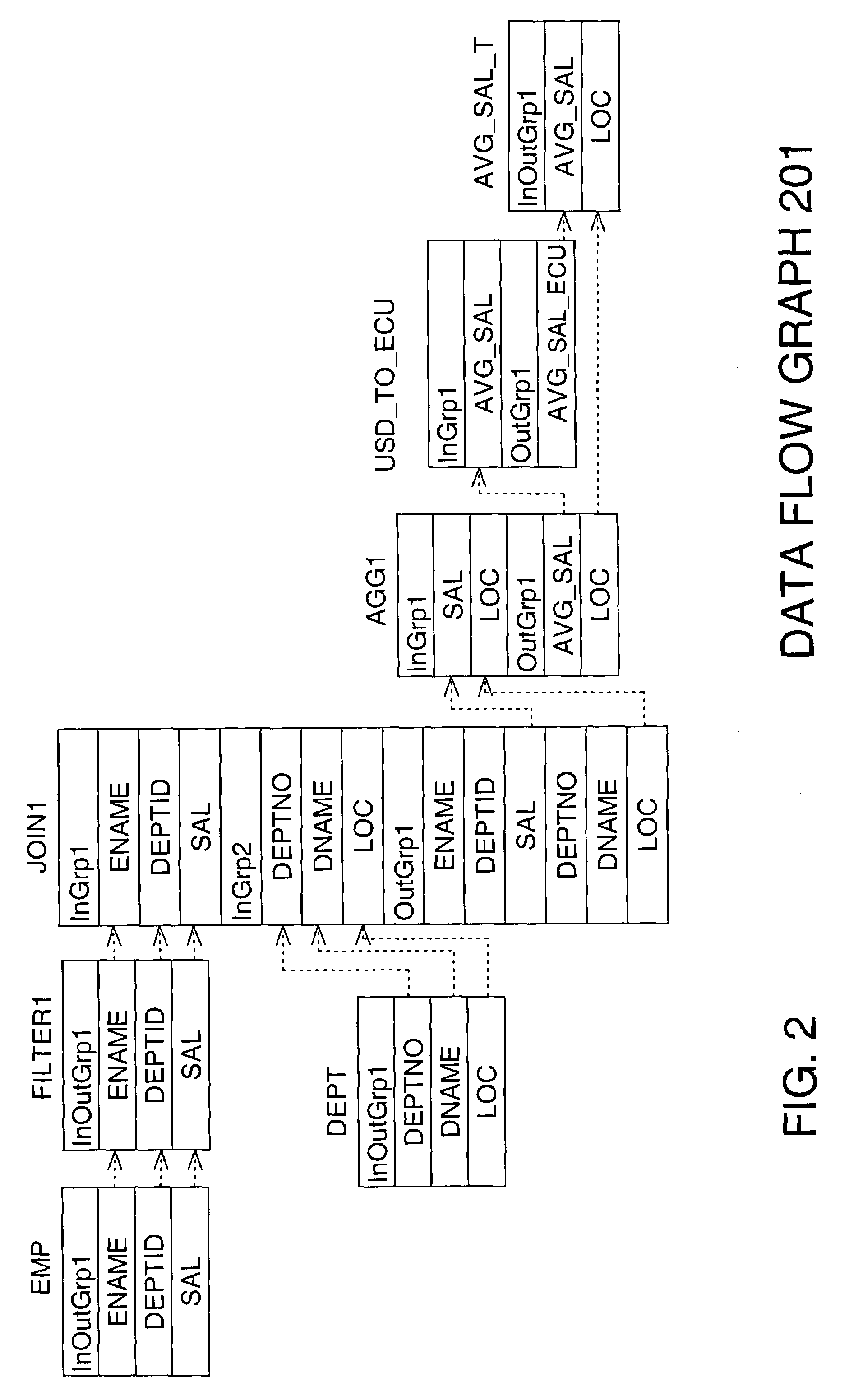Operator approach for generic dataflow designs
a data flow and operator technology, applied in the field of database systems, can solve the problems of wasteful work of data movement engines, data movement engines that lack access to information that is needed for optimization, and the inability of data movement engines to optimize data movement plans
- Summary
- Abstract
- Description
- Claims
- Application Information
AI Technical Summary
Problems solved by technology
Method used
Image
Examples
Embodiment Construction
[0026]In the following description, for the purposes of explanation, numerous specific details are set forth in order to provide a thorough understanding of the present invention. It will be apparent, however, that the present invention may be practiced without these specific details. In other instances, well-known structures and devices are shown in block diagram form in order to avoid unnecessarily obscuring the present invention.
Overview
[0027]Described herein is an operator-based approach to representing dataflows. A dataflow is a set of one or more operations and one or more flows of data that are processed successively by the set of operations. Dataflow processes commonly occur in many environments. For example, in a relational database system, a dataflow process may be the generation of the results of a query. Such a dataflow consists of a retrieval operation for retrieving data, followed by a filtering operation for filtering data that satisfies a particular criteria. The out...
PUM
 Login to View More
Login to View More Abstract
Description
Claims
Application Information
 Login to View More
Login to View More - R&D
- Intellectual Property
- Life Sciences
- Materials
- Tech Scout
- Unparalleled Data Quality
- Higher Quality Content
- 60% Fewer Hallucinations
Browse by: Latest US Patents, China's latest patents, Technical Efficacy Thesaurus, Application Domain, Technology Topic, Popular Technical Reports.
© 2025 PatSnap. All rights reserved.Legal|Privacy policy|Modern Slavery Act Transparency Statement|Sitemap|About US| Contact US: help@patsnap.com



